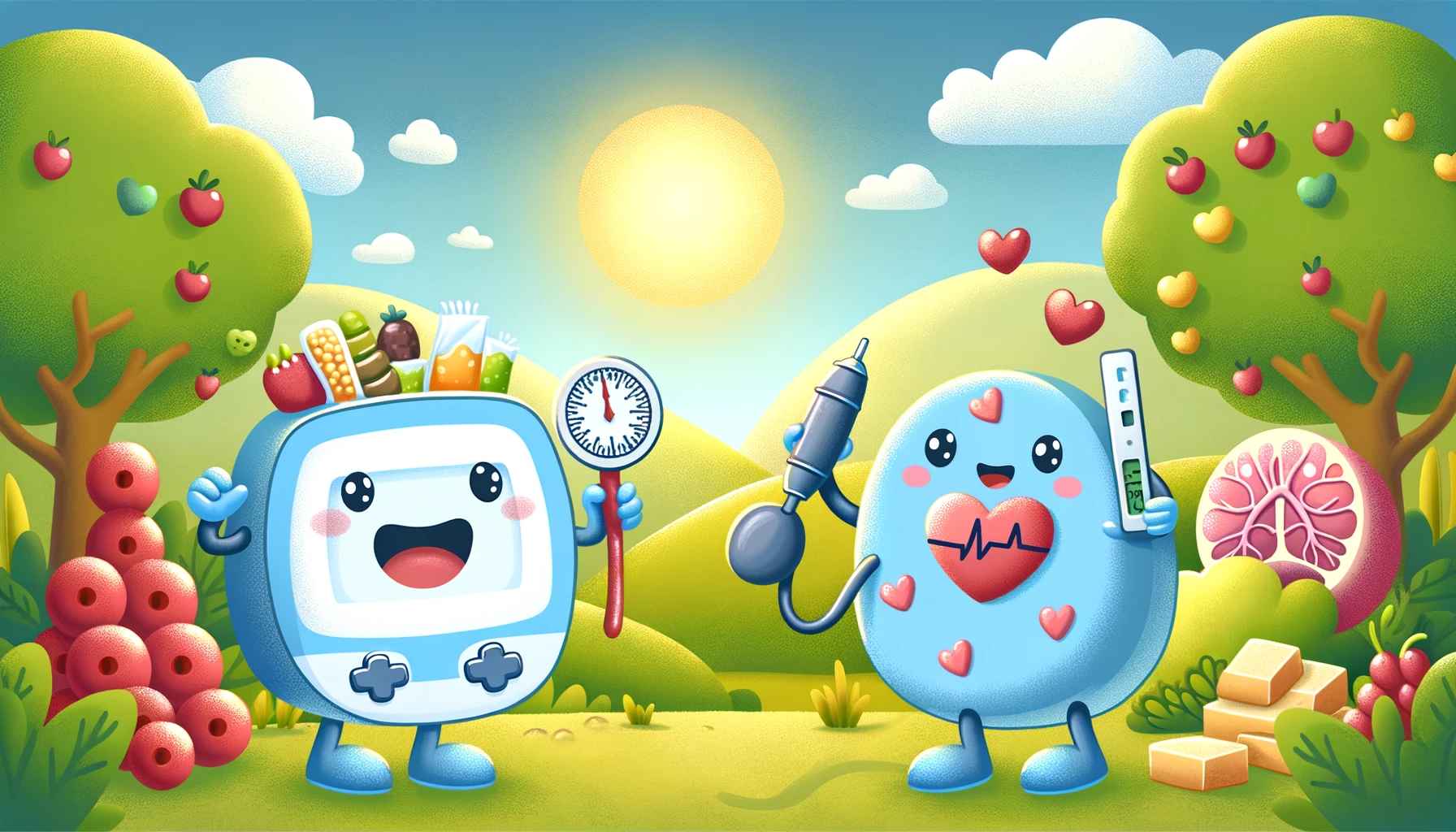Diabetes vs. Hypertension: Understanding the Differences and Similarities
Diabetes vs. Hypertension: Understanding the Differences and Similarities
Table of Contents
- Introduction to Diabetes and Hypertension
- Causes of Diabetes
- Causes of Hypertension
- Symptoms of Diabetes
- Symptoms of Hypertension
- Risk Factors for Both Conditions
- Complications of Diabetes and Hypertension
- Diagnosis and Monitoring
- Management and Treatment Strategies
- Importance of Lifestyle Changes
- Conclusion
- References
Diabetes vs. Hypertension: Understanding the Differences and Similarities
Introduction to Diabetes and Hypertension Diabetes and hypertension are two common chronic conditions that can have serious health implications if not managed properly. While they affect different systems in the body, they often coexist and share some risk factors and complications. This article explores the differences and similarities between diabetes and hypertension, highlighting their causes, symptoms, and management strategies.
Causes of Diabetes Diabetes is a metabolic disorder characterized by high blood glucose levels. There are two main types:
- Type 1 Diabetes: An autoimmune condition where the body’s immune system attacks insulin-producing beta cells in the pancreas. The exact cause is unknown, but genetic and environmental factors play a role.
- Type 2 Diabetes: A condition where the body becomes resistant to insulin or doesn’t produce enough insulin. It is primarily caused by genetic factors, obesity, physical inactivity, and poor diet.
Causes of Hypertension Hypertension, or high blood pressure, occurs when the force of blood against the artery walls is too high. It can be classified into two types:
- Primary (Essential) Hypertension: The most common type, with no identifiable cause. It develops gradually over many years and is influenced by genetic factors, age, and lifestyle.
- Secondary Hypertension: Caused by underlying conditions such as kidney disease, adrenal gland tumors, thyroid problems, or certain medications. It can develop suddenly and cause higher blood pressure than primary hypertension.
Symptoms of Diabetes The symptoms of diabetes can vary, but common signs include:
- Increased Thirst and Urination: High blood sugar levels cause excess glucose in the urine, leading to dehydration and frequent urination.
- Fatigue: Lack of insulin or insulin resistance prevents cells from using glucose for energy.
- Blurred Vision: High blood sugar levels can cause the lens of the eye to swell.
- Unintended Weight Loss: Particularly in Type 1 diabetes, where the body starts to break down fat and muscle for energy due to lack of insulin.
Symptoms of Hypertension Hypertension is often called the “silent killer” because it typically has no symptoms until significant damage has occurred. When symptoms do appear, they may include:
- Headaches: Usually occurring in the morning and more severe than usual.
- Shortness of Breath: Due to strain on the heart and lungs.
- Nosebleeds: Occasionally, if blood pressure is extremely high.
- Dizziness or Vision Problems: Resulting from damage to blood vessels in the brain or eyes.
Risk Factors for Both Conditions Several risk factors are common to both diabetes and hypertension:
- Obesity: Excess weight increases the risk of both conditions.
- Sedentary Lifestyle: Lack of physical activity contributes to weight gain and poor cardiovascular health.
- Unhealthy Diet: Diets high in processed foods, sugar, salt, and unhealthy fats increase the risk.
- Family History: Genetics play a significant role in the development of both conditions.
- Age: The risk of both conditions increases with age.
Complications of Diabetes and Hypertension Both conditions can lead to serious complications if not managed properly:
- Cardiovascular Disease: Both diabetes and hypertension significantly increase the risk of heart attack, stroke, and other cardiovascular conditions.
- Kidney Damage: High blood sugar and high blood pressure can damage the kidneys, leading to chronic kidney disease or kidney failure.
- Eye Damage: Both conditions can cause retinopathy, glaucoma, and cataracts, potentially leading to blindness.
- Nerve Damage: Diabetic neuropathy and hypertension-induced damage to blood vessels can lead to neuropathy, causing pain and loss of function in the limbs.
Diagnosis and Monitoring Diagnosing and monitoring both conditions involve various tests:
- Diabetes Diagnosis: Blood tests such as fasting blood glucose, HbA1c, and oral glucose tolerance tests are used to diagnose diabetes.
- Hypertension Diagnosis: Blood pressure readings taken on multiple occasions are used to diagnose hypertension. Ambulatory blood pressure monitoring may also be used.
- Monitoring: Regular monitoring of blood glucose levels, blood pressure, and related health parameters is essential for managing both conditions.
Management and Treatment Strategies Effective management of both diabetes and hypertension includes lifestyle changes and medications:
- Lifestyle Changes:
- Healthy Diet: Eating a balanced diet low in sugar, salt, and unhealthy fats.
- Regular Exercise: Engaging in physical activity to maintain a healthy weight and improve cardiovascular health.
- Weight Management: Maintaining a healthy weight through diet and exercise.
- Stress Management: Reducing stress through relaxation techniques and sufficient sleep.
- Medications:
- Diabetes Medications: Insulin for Type 1 diabetes, oral medications, and sometimes insulin for Type 2 diabetes.
- Hypertension Medications: Antihypertensive drugs such as ACE inhibitors, beta-blockers, diuretics, and calcium channel blockers.
- Regular Check-ups: Regular visits to healthcare providers to monitor and adjust treatment plans.
Importance of Lifestyle Changes Adopting healthy lifestyle habits is crucial for managing both diabetes and hypertension:
- Diet: Emphasizing whole grains, fruits, vegetables, lean proteins, and healthy fats.
- Exercise: At least 150 minutes of moderate-intensity aerobic activity per week, combined with strength training exercises.
- Smoking Cessation: Avoiding tobacco use to reduce cardiovascular risk.
- Alcohol Moderation: Limiting alcohol intake to reduce blood pressure and control blood sugar levels.
Conclusion Understanding the differences and similarities between diabetes and hypertension is essential for effective management and prevention. Both conditions require diligent monitoring, healthy lifestyle changes, and, often, medication. By taking proactive steps, individuals can manage their health and reduce the risk of complications associated with these chronic conditions.

<ⓒ WizardMedics (wizardmedics.com)>


